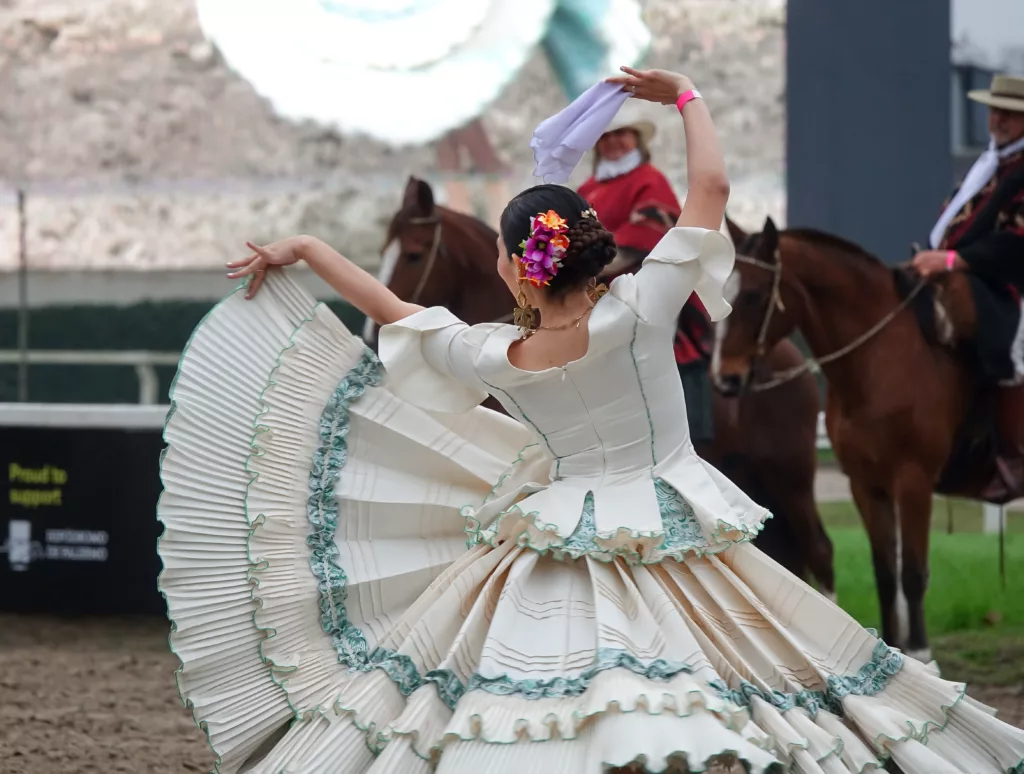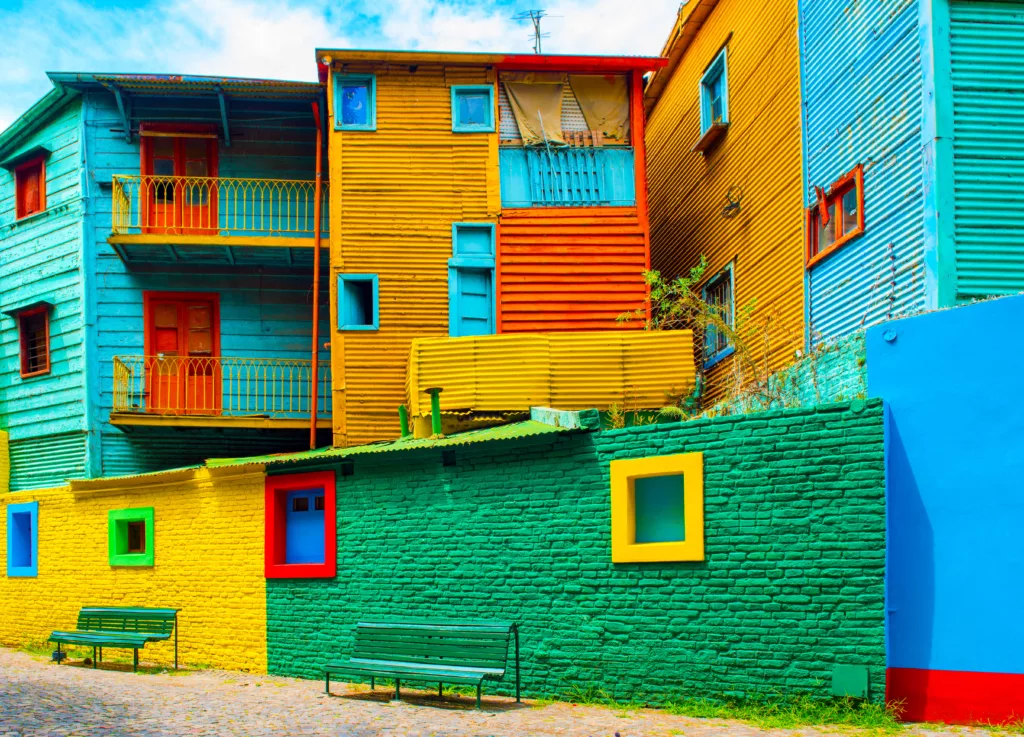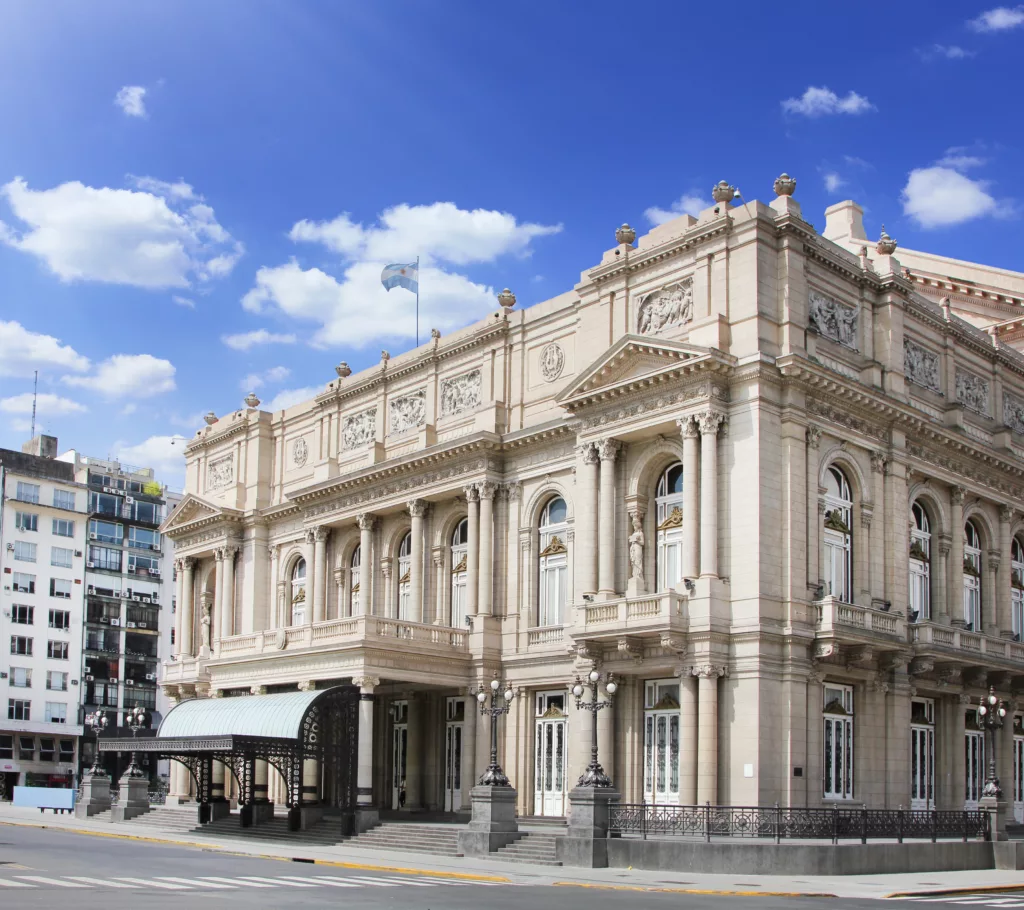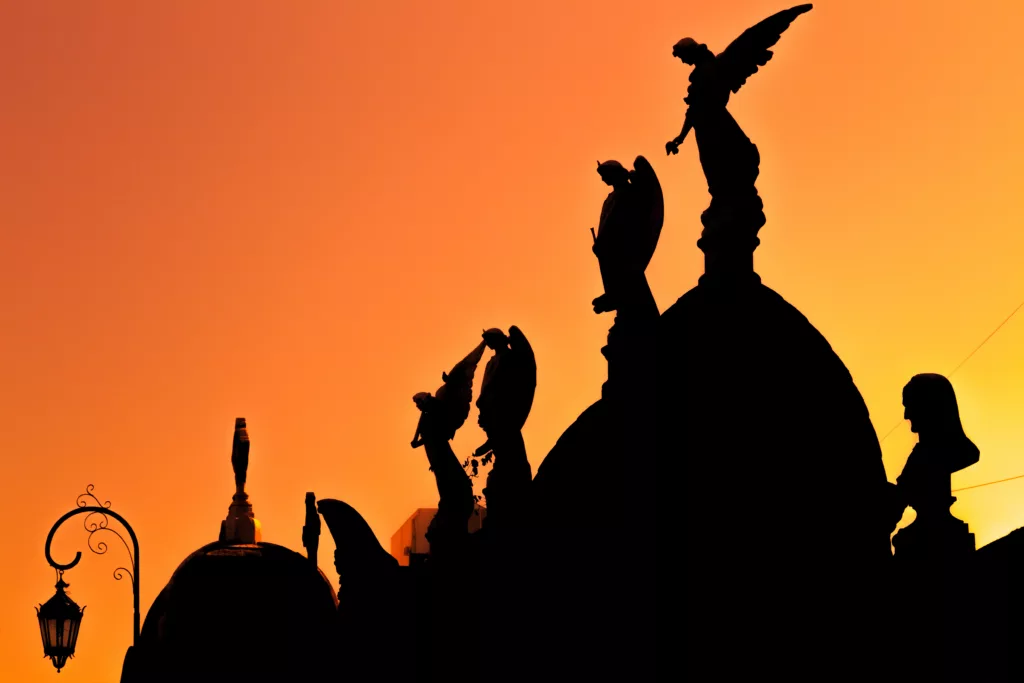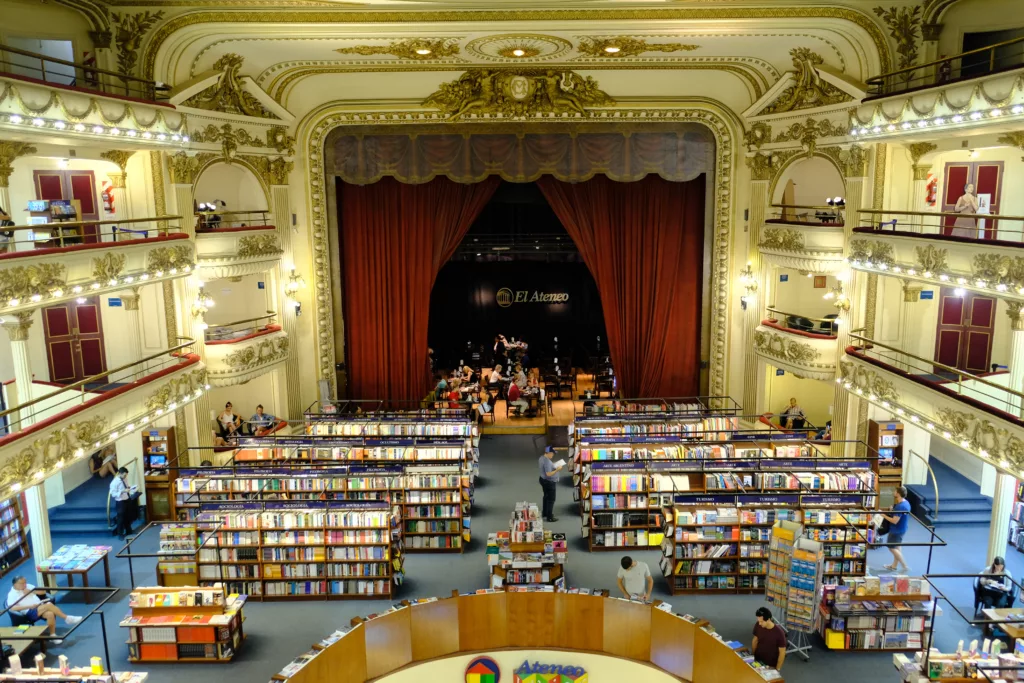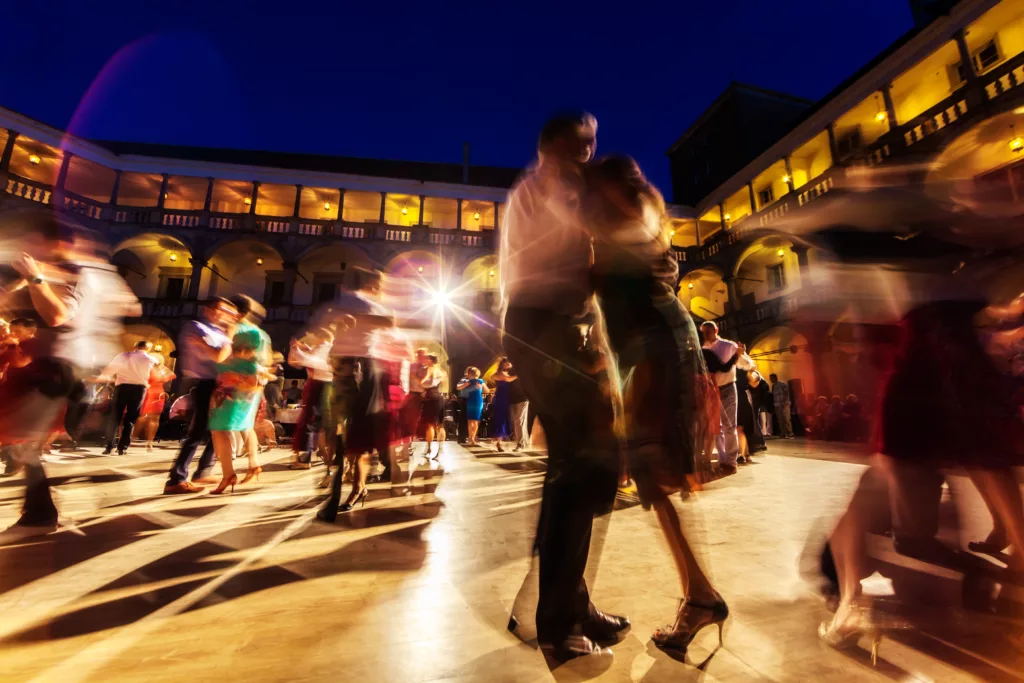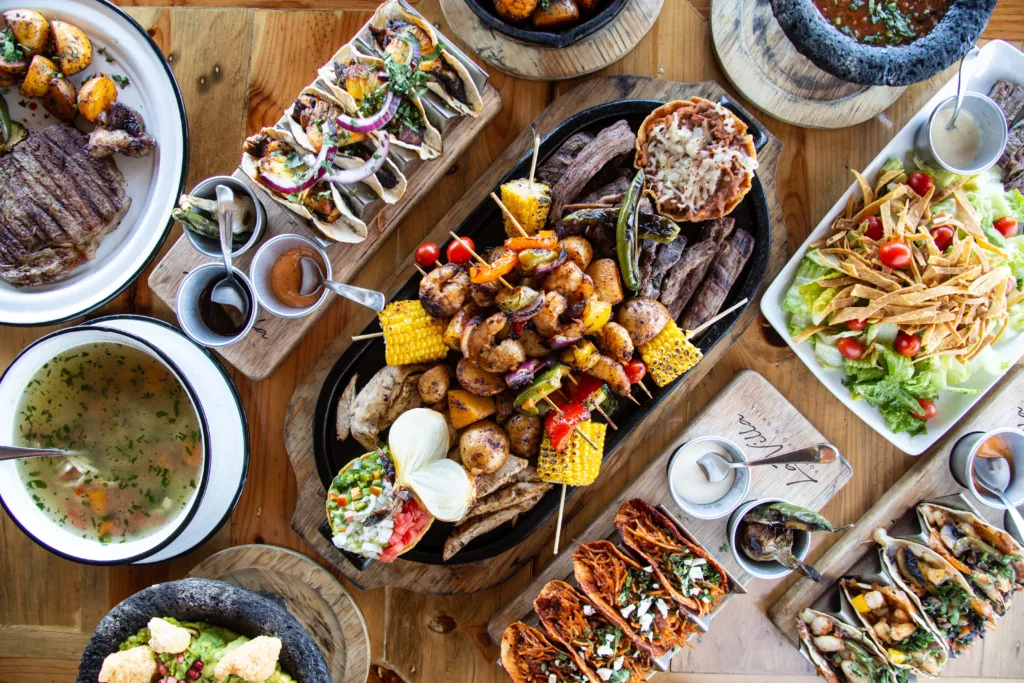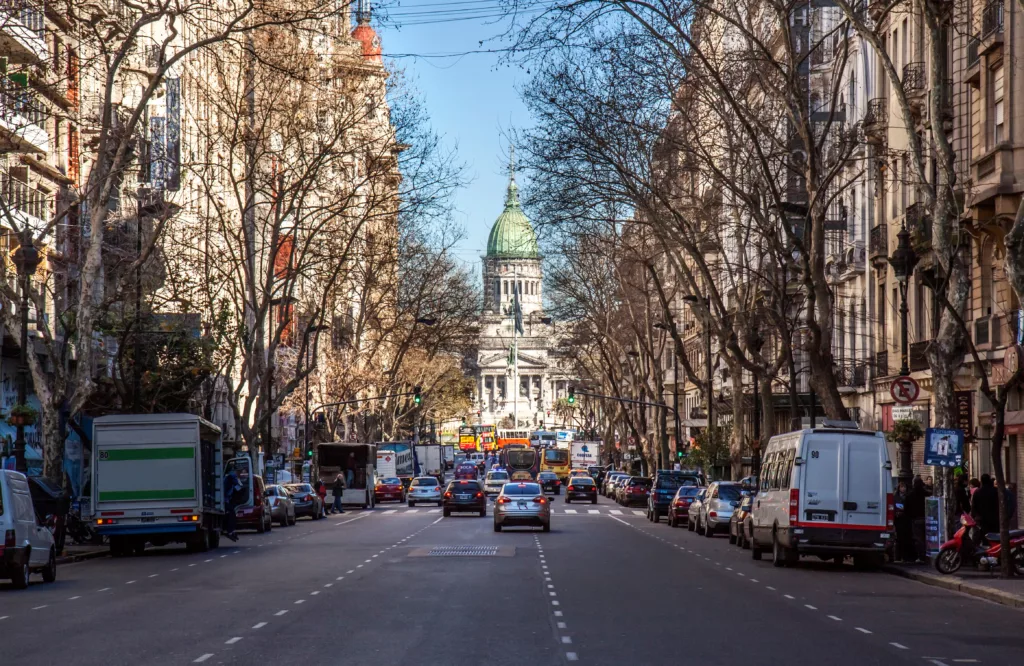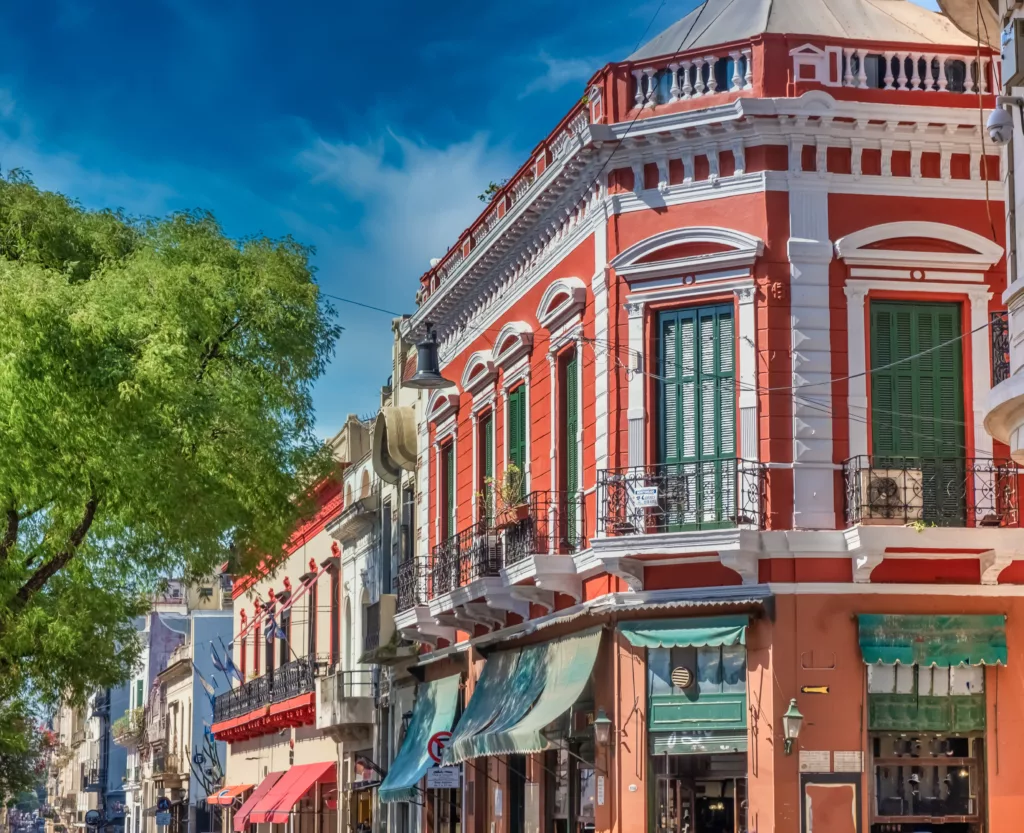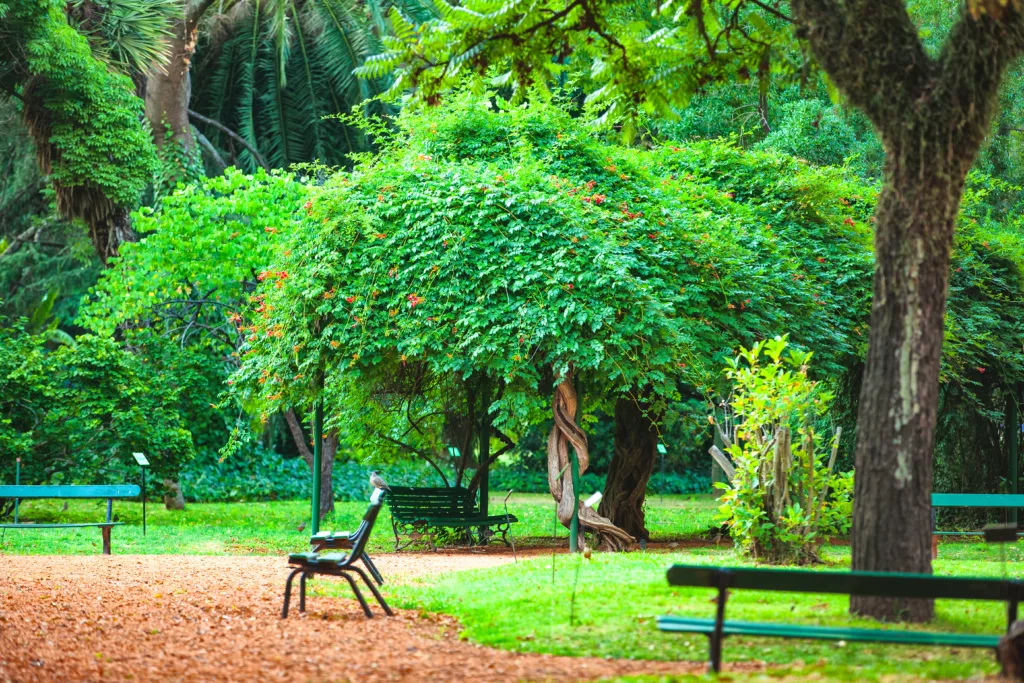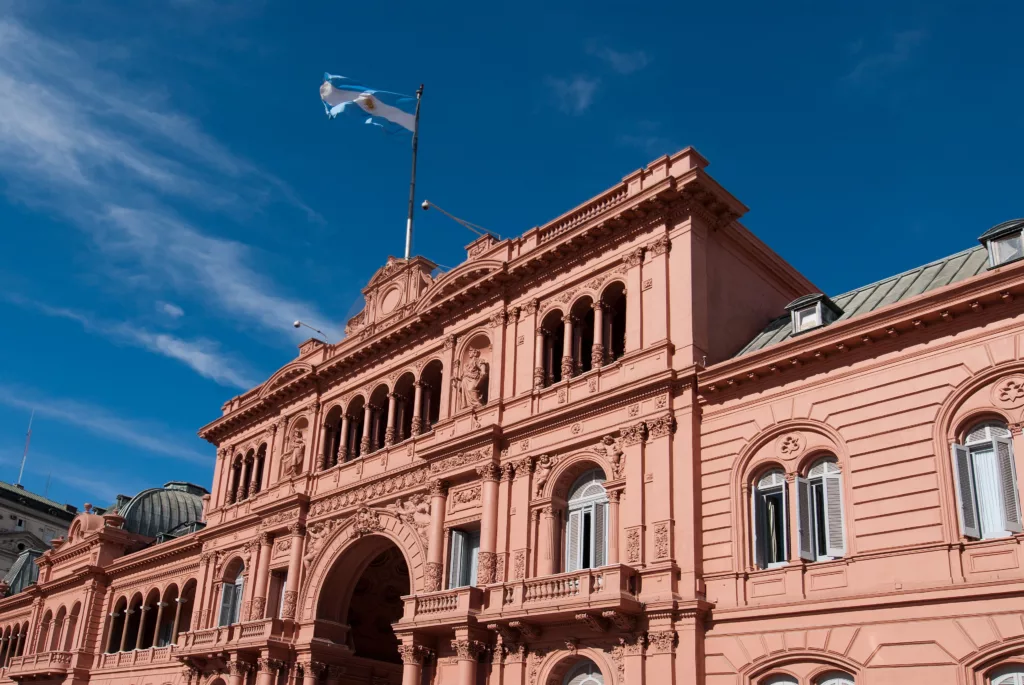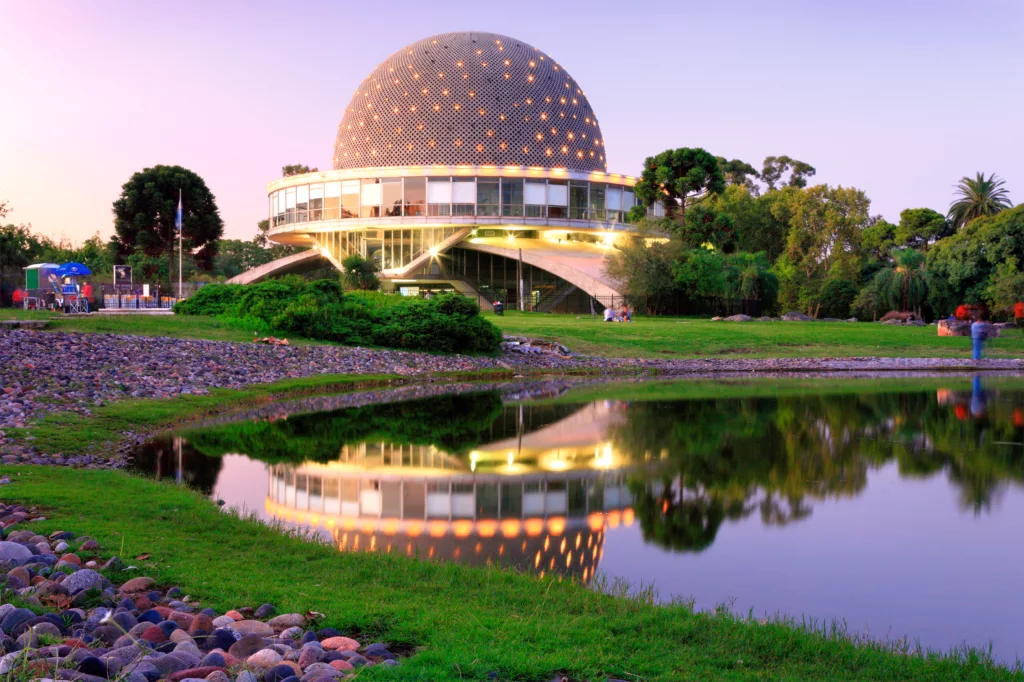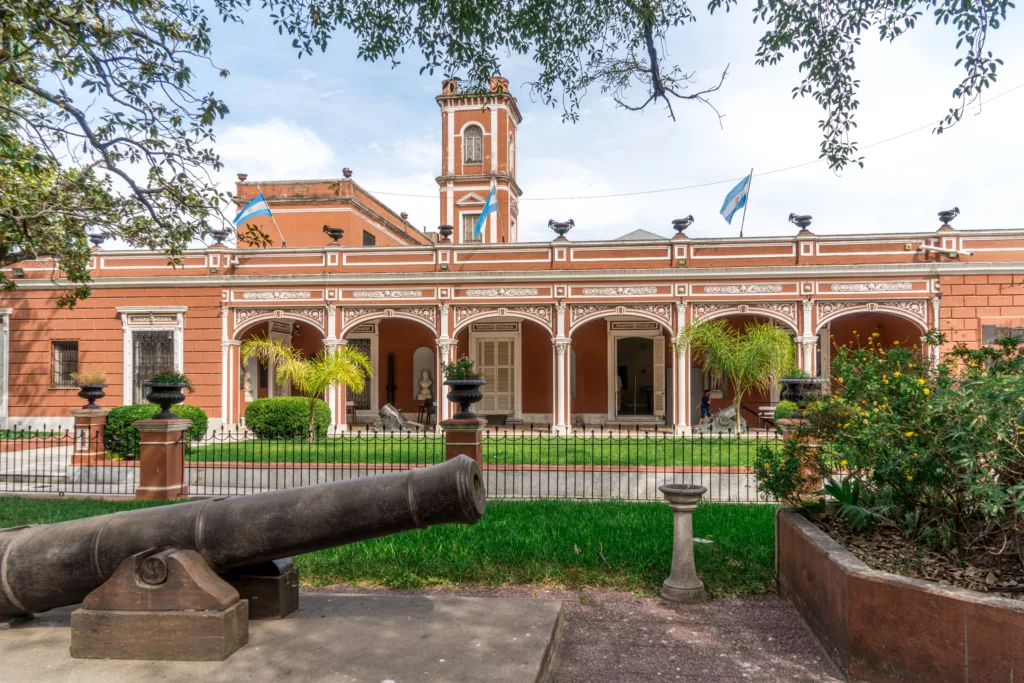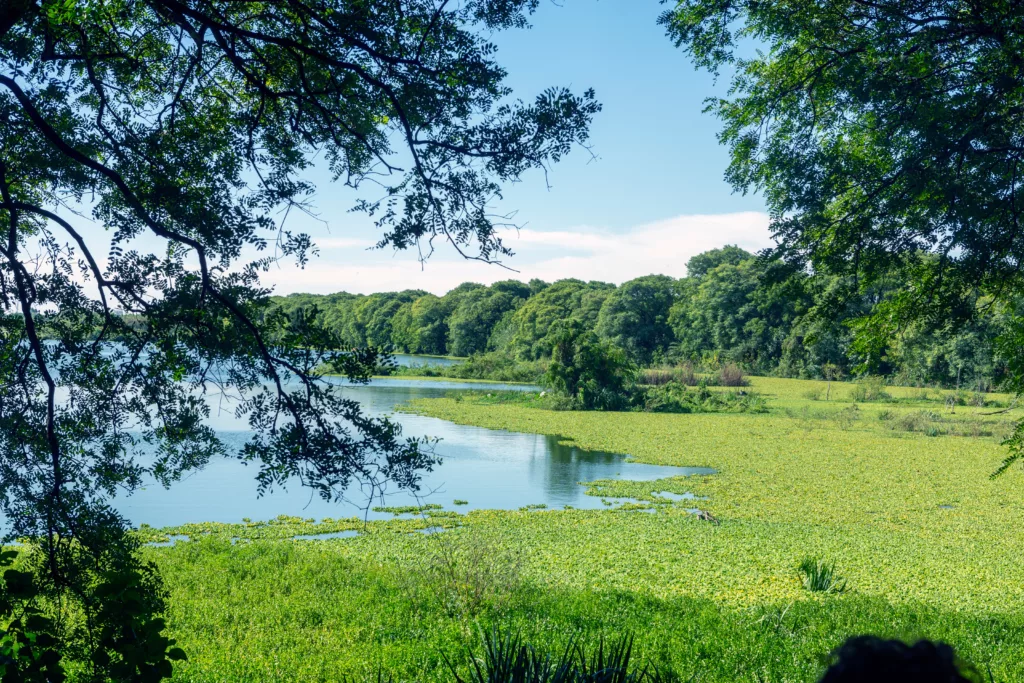If you’re planning a trip to Argentina, your itinerary wouldn’t be complete without visiting its bustling capital, Buenos Aires. This city, often referred to as the “Paris of South America”, is a mesmerizing blend of European grandeur and Latin passion.
It brims with culture, history, fantastic cuisine, and pulsating nightlife. With a diverse array of neighborhoods, each with its unique charm and character, the city never ceases to amaze and inspire those who visit. From the cobblestone streets of San Telmo to the vibrant colors of La Boca, the elegance of Recoleta to the trendiness of Palermo, there’s so much to explore and discover in Buenos Aires. But with such an abundance of attractions and experiences, it can be challenging to know where to begin.
To help you navigate and ensure you experience the city’s magic to the fullest, we’ve curated a list of 19 exciting things to do in Buenos Aires, a perfect blend of the city’s most famous sights and hidden treasures beyond the typical tourist trails.
1. Explore the Neighborhood of La Boca
Step into a world of color, passion, and history in the iconic neighborhood of La Boca. Nestled in the southern district of Buenos Aires, La Boca is an emblem of the city’s vibrant spirit, encapsulating the quintessential Buenos Aires experience. It’s like stepping into a vivid painting, with its brightly painted houses, tango dancers performing on the streets, and art markets brimming with local talent.
La Boca, which translates to “The Mouth”, earned its name due to its location at the mouth of the Riachuelo river. In the late 19th and early 20th centuries, the neighborhood was a melting pot of cultures, with an influx of immigrants from Genoa, Italy. This immigrant influence remains palpable even today, seen in the neighborhood’s architecture, food, and lifestyle.
At the heart of La Boca, you’ll find the world-renowned Caminito Street, the neighborhood’s beating heart. It’s a living museum, filled with vibrant buildings, inspired by the leftover paint the dock workers used on their homes. The street is adorned with works by local artists and filled with the rhythm of tango, Argentina’s most beloved dance.
Speaking of tango, the history of La Boca is intertwined with this passionate dance. Tango was born in the working-class neighborhoods of Buenos Aires, and La Boca claims a significant part of this history. Today, tango dancers, or bailarines, add a splash of elegance to the streets, offering impromptu performances and dance lessons to passers-by.
But La Boca is not just about aesthetics and dance. The neighborhood is also home to the legendary Boca Juniors football club. La Bombonera, the team’s stadium, is a sacred place for football fans and another testament to the neighborhood’s passion and vitality.
Voyagix Tips
When planning your trip to La Boca, here are a few tips:
- Timing: Visit during daytime, as the neighborhood is most lively and safe. Note that most businesses and attractions close in the evening.
- Guided Tour: Consider joining a guided tour to delve deeper into the history and culture of the neighborhood, and to safely navigate the area.
- Stay in the Main Areas: Stick to the main tourist areas like Caminito Street and the area around La Bombonera.
- Enjoy a Tango Show: For the ultimate La Boca experience, watch a live tango performance. Some venues even offer dinner and a show combo.
- Football Match: If you’re a football fan, try to catch a Boca Juniors match at La Bombonera. The atmosphere is electric!
Immersing yourself in La Boca is more than just a visit; it’s stepping into a world where art, history, and passion intertwine. It’s about experiencing the essence of Buenos Aires, from its rich immigrant history to its vibrant present, all painted in a burst of colors and rhythms. La Boca truly is a living testament to Buenos Aires’ captivating spirit.
2. Visit the Teatro Colón
Stepping into the Teatro Colón is like stepping into a grand world of art, culture, and architectural brilliance. As one of the best opera houses worldwide, it offers a captivating blend of stunning architecture, impeccable acoustics, and a rich history that resonates with every performance. The grandeur of Teatro Colón is a testament to Buenos Aires’ deep-rooted love for the arts, making it a must-visit for any art and culture enthusiast.
Built in 1908, the Teatro Colón holds a significant place in the cultural fabric of Buenos Aires. The architectural design, led by Francesco Tamburini and Vittorio Meano, is reminiscent of European styles, combining French and Italian influences. Upon entering, the grandeur of the main hall is breathtaking. The stunning golden details, plush red seating, and intricate ceiling frescoes create an ambiance of opulence and grandeur.
But the magic of the Teatro Colón extends far beyond its aesthetic appeal. What truly sets it apart is its acoustics, consistently ranked among the top five concert venues in the world. The main auditorium, shaped like a horseshoe, enhances sound quality, making every seat in the house a great one. Whether you’re a connoisseur of the arts or a casual observer, the perfect blend of sight and sound at Teatro Colón makes for an unforgettable experience.
From opera and ballet to concerts and philharmonic performances, the Teatro Colón offers a wide range of shows. If you can, try to catch a live performance. Witnessing a show at Teatro Colón is not just about watching a performance; it’s about being part of a beautiful, historical tradition.
Voyagix Tips
When planning your visit to the Teatro Colón, keep the following tips in mind:
- Book in Advance: Tickets for performances can sell out quickly, especially for popular shows. To ensure a seat, try to book your tickets well in advance.
- Guided Tours: If you can’t catch a show, opt for a guided tour. Tours are available in multiple languages and offer insights into the building’s history, architecture, and functioning.
- Dress Code: For evening performances, formal attire is generally expected. However, afternoon shows and guided tours have a more relaxed dress code.
- Arrive Early: Try to arrive at least 30 minutes early for performances. This gives you time to soak in the ambiance and find your seats without rushing.
Visiting the Teatro Colón is more than just exploring an opera house; it’s about immersing yourself in the city’s rich cultural heritage. So, whether you’re catching a mesmerizing opera performance or marveling at the intricate architectural details on a guided tour, a trip to the Teatro Colón promises an enriching and unforgettable experience.
3. Wander Around Recoleta Cemetery
While a cemetery may seem an unusual tourist attraction, Buenos Aires’ Recoleta Cemetery is no ordinary resting place. Situated in the heart of the city, the cemetery is a labyrinth of ornate mausoleums and statues that tell the stories of the rich and famous of Argentina’s past. Despite its somber purpose, the Recoleta Cemetery provides a uniquely intriguing and profound exploration of the city’s history, culture, and architecture.
The cemetery was established in the early 18th century by the order of the Recoletos monks, from whom the neighborhood takes its name. However, it wasn’t until the 19th century, when a yellow fever epidemic forced the wealthy to relocate to Recoleta, that the cemetery gained its reputation as a final resting place for the elite. Since then, it has seen the burial of countless notable figures, including presidents, writers, scientists, and the much-revered Eva Perón.
Recoleta Cemetery is an open-air museum, with each tomb as a piece of art. The mausoleums, designed in a wide range of architectural styles from Art Deco and Baroque to Neo-Gothic, reflect the rich architectural heritage of Buenos Aires. Amid the maze of tombstones and crypts, you’ll find intricate carvings, stunning statues, and elaborate marble sarcophagi. Some mausoleums even rival small chapels in size, their opulence mirroring the affluence and status of the interred.
But the cemetery is not just about impressive architecture; it’s a place of poignant stories and legends. Each grave tells a story, some shrouded in mystery, others echoing with tales of love, betrayal, and ambition. This is where history meets mythology, where the memory of Argentina’s notable figures lives on.
Voyagix Tips
When planning your visit to the Recoleta Cemetery, consider these tips:
- Guided Tour: Join a guided tour to gain deeper insights into the cemetery’s history and the notable figures laid to rest here. Some tours are even offered for free.
- Map: The cemetery is a maze. A map, available at the entrance, can be helpful in locating famous graves and not getting lost.
- Time: Allow at least a couple of hours to explore the cemetery. There’s much to see, and the cemetery’s size and complexity can be overwhelming.
- Respect: Remember, this is a cemetery. Show respect for the surroundings and avoid loud conversations or inappropriate behavior.
A visit to the Recoleta Cemetery is a journey through time, a silent walk among the lives of those who shaped Argentina. It’s a unique experience, offering a window into the country’s past, told through the lasting legacy of its residents. Despite its seemingly grim nature, the Recoleta Cemetery is an essential part of the Buenos Aires experience, a solemn, yet fascinating testament to the city’s rich and layered history.
4. Dive into Argentine Literature at El Ateneo Grand Splendid
Imagine a place where the magic of literature and the grandeur of theater converge. That’s exactly what you’ll find at El Ateneo Grand Splendid, one of the world’s most beautiful bookstores. Once a grand theater, this architectural jewel has been lovingly transformed into a temple for book lovers. With its lavish interior, vast collection of books, and a café on the former stage, El Ateneo is a cultural beacon of Buenos Aires.
El Ateneo Grand Splendid started its life as a theater in 1919. Designed by architects Pero and Torres Armengol, it quickly became a landmark with its stunning frescoed ceilings, ornate carvings, and plush crimson stage curtains. Over the years, the building has served as a cinema and a radio station, before finally finding its latest incarnation as a bookstore in 2000.
Today, El Ateneo preserves much of its theatrical splendor. The original balconies, where spectators once enjoyed performances, now provide cozy reading nooks. The stage, once home to tango performances, is now a stylish café. Patrons can sip coffee while gazing at the opulent surroundings or immerse themselves in a book beneath the stunning ceiling fresco painted by Italian artist Nazareno Orlandi.
With over 120,000 books in stock, ranging from literature and philosophy to art and history, El Ateneo is a paradise for bibliophiles. In addition to Spanish books, there’s a substantial collection of English titles as well. It’s easy to lose track of time browsing the aisles, exploring the vast range of books, or simply marveling at the architectural beauty around you.
Voyagix Tips
For the best experience at El Ateneo Grand Splendid, keep these tips in mind:
- Time: Plan to spend a few hours here. The bookstore’s size and sheer beauty can be overwhelming, and you’ll want to take your time to explore.
- Photography: Photography is allowed, so don’t forget your camera. The bookstore’s stunning interior offers plenty of Instagram-worthy shots.
- Café: Don’t miss the opportunity to enjoy a coffee or a snack at the café on the former stage. It offers a unique vantage point of the bookstore.
- Events: El Ateneo often hosts literary events and book signings. Check out their events calendar to see if there’s anything happening during your visit.
A visit to El Ateneo Grand Splendid is not just a bookstore visit; it’s an experience that blends culture, history, architecture, and literature into one. Whether you’re a book lover or an architecture enthusiast, the grandeur and cultural richness of El Ateneo promise an unforgettable Buenos Aires experience.
5. Immerse Yourself in Tango at a Milonga
When in Buenos Aires, a rendezvous with tango is a must. Tango isn’t just a dance; it’s a cultural phenomenon, a passionate expression of Argentina’s soul. To truly experience tango in its most authentic form, head to a local milonga. Whether you choose to embrace the challenge of a dance class or prefer to watch as locals elegantly perform, visiting a milonga is a quintessential Buenos Aires experience.
The term ‘milonga’ refers to both a type of music and a place or event where tango is danced. Deeply rooted in the city’s history, milongas originated in the late 19th century in the working-class neighborhoods of Buenos Aires. They were places where locals gathered to socialize, share stories, and, most importantly, dance. Today, these traditional dance halls capture the heart and soul of the tango culture.
Stepping into a milonga, you’ll be instantly swept up in the passion and drama of the tango. The atmosphere is electric, a mix of anticipation, romance, and intense focus. Watch as dancers glide across the floor, their movements telling stories of love, longing, and heartbreak. The music, with its distinctive rhythm and hauntingly beautiful melodies, is entrancing.
If you’re feeling adventurous, take a tango class. Don’t worry if you’re a complete beginner; many milongas offer classes for all levels. Under the guidance of experienced instructors, you’ll learn the basic steps, the art of leading and following, and how to communicate with your partner without words. There’s something incredibly exhilarating about dancing tango in its birthplace, an experience that’s sure to leave a lasting impression.
Voyagix Tips
For the best tango experience at a milonga, consider these tips:
- Timing: Milongas usually start late and go on until the early hours of the morning. If you’re there for a class, arrive early.
- Dress Code: Dress smartly. Tango is a stylish affair, and many dancers dress up for milongas. Comfortable shoes are a must, especially for those planning to dance.
- Reservations: Popular milongas can get crowded. Consider making a reservation, especially if you’re visiting on a weekend.
- Etiquette: Tango has its own etiquette, from how to invite someone to dance to navigating the dance floor. Observing others and asking when in doubt can save you from potential faux pas.
Immersing yourself in the world of tango at a local milonga is an unforgettable experience, a beautiful journey into the heart of Argentina’s cultural identity. It’s an opportunity to not just watch, but to participate in a dance that embodies the passion, the drama, and the vibrant spirit of Buenos Aires.
6. Relish a Parrillada
When it comes to Argentina’s culinary scene, there’s one experience that stands above the rest: indulging in a traditional Parrillada. Argentina is world-renowned for its quality meats, and nowhere is this better showcased than in a Parrillada, an Argentine BBQ feast. Visit a local parrilla restaurant, and prepare yourself for an authentic culinary adventure.
A Parrillada represents the heart of Argentine cuisine, and the ritual of grilling meat is something of an art form here. The term ‘Parrillada’ refers to the grill (parrilla) itself and the cooking technique, as well as the assortment of meats prepared on it. A typical Parrillada might include beef ribs, sausages, blood sausages, sweetbreads, and sometimes even more adventurous offal cuts, all slow-cooked to perfection on the grill.
But it’s not just about the meat. Parrilladas are a social event, a time to gather with friends and family around the table, sharing stories while the aroma of grilling meat fills the air. There’s a certain anticipation that builds as the parrillero (grillmaster) expertly tends to the grill, adjusting the embers, turning the cuts, ensuring each piece is cooked to perfection.
Each mouthful of a Parrillada offers a taste of Argentine culture. The succulent, smoky, and flavor-rich meats, often enjoyed with a dab of the traditional chimichurri sauce, are a culinary revelation. Paired with a glass of Malbec, Argentina’s flagship wine, it’s a meal to remember.
Voyagix Tips
For the best Parrillada experience, consider these tips:
- Reservations: Buenos Aires’ parrilla restaurants are popular, and some of the best ones can fill up quickly. Consider making a reservation, especially if you plan to visit during peak dining hours.
- Where to Go: Some popular parrilla restaurants include La Cabrera, Don Julio, and Pena. Each offers a slightly different dining experience, so consider visiting more than one if you have time.
- What to Order: While the Parrillada is the main event, don’t overlook other Argentine specialties such as provoleta (grilled provolone cheese) or empanadas (stuffed pastries) as appetizers. For dessert, try dulce de leche, a sweet caramel-like sauce that’s a national favorite.
Embarking on a Parrillada journey is more than just a meal; it’s an immersive cultural and culinary experience. So, sit back, grab your fork, and prepare for a taste of Argentina that will ignite your senses and leave you craving for more.
7. Walk Down Avenida de Mayo
A trip to Buenos Aires wouldn’t be complete without a leisurely stroll down the bustling Avenida de Mayo. Stretching from the Presidential Palace, Casa Rosada, to the Congress, this historic avenue is a treasure trove of architectural gems, local cafés, and vibrant city life.
Constructed in 1894, Avenida de Mayo was the first grand boulevard of Buenos Aires. It was designed to mirror the grand boulevards of Europe, and the influence is evident in the impressive array of architectural styles. As you walk down this avenue, you’ll pass by magnificent buildings showcasing Art Nouveau, Neoclassical, and Beaux-Arts styles. Among these is the Palacio Barolo, a stunning early 20th-century building inspired by Dante’s Divine Comedy.
However, Avenida de Mayo isn’t just about architecture. It’s a bustling microcosm of Buenos Aires’ everyday life. The avenue is home to numerous traditional cafés, called ‘cafés notables,’ where locals gather for a coffee and a chat. Among them is the famous Café Tortoni, the oldest café in the city. With its oak interiors and stained glass, stepping into Café Tortoni is like stepping back in time.
The avenue is also a hub of political and social activity. It’s not uncommon to see political rallies, protests, and parades taking place here. The Plaza de Mayo, located at one end of the avenue, has been the site of many of Argentina’s most important historical events.
Voyagix Tips
Here are some tips to enhance your experience on Avenida de Mayo:
- Timing: The avenue is lively throughout the day, but it’s particularly vibrant in the late afternoon and early evening, when office workers join the mix and cafés fill up with locals.
- Tours: Consider taking a guided walking tour to learn more about the avenue’s history and architecture. The Buenos Aires Tourism Bureau offers free guided tours in English and Spanish.
- Cafés: Don’t miss the chance to take a coffee break at one of the traditional cafés along the avenue. Café Tortoni and London City Bar are two of the most iconic ones.
- Events: Avenida de Mayo frequently hosts festivals and events, such as the annual Buenos Aires Celebra parades, where different communities showcase their culture.
Whether you’re an architecture enthusiast, a history buff, or a coffee lover, a stroll down Avenida de Mayo offers a fascinating glimpse into Buenos Aires’ past and present. It’s a vibrant and captivating avenue that encapsulates the city’s charm and spirit.
8. Discover the Charm of San Telmo
Step back in time and explore the old-world charm of San Telmo, the oldest neighborhood in Buenos Aires. This bohemian district is a fascinating blend of historic architecture, cobblestone streets, antique shops, and vibrant street life. At the heart of it all is the bustling San Telmo Market, a must-visit for any traveler.
San Telmo was originally home to Buenos Aires’ affluent families until a yellow fever epidemic in the late 19th century led them to move north. The grand homes they left behind were divided into tenement housing, and over time, artists and immigrants moved in, giving the neighborhood its bohemian character.
Today, San Telmo is a haven for artists, antique lovers, and anyone who appreciates a slower, more relaxed pace. Its narrow, cobblestone streets are lined with well-preserved colonial buildings, many of which now house charming boutiques, art studios, and eclectic restaurants. On Sundays, the neighborhood hosts the popular San Telmo Fair, where vendors sell antiques, vintage items, and artisan crafts.
The San Telmo Market is another highlight of the neighborhood. This historic market has been operating since 1897 and is a feast for the senses. Here, you’ll find everything from fresh produce and local foods to antiques and collectibles. It’s a fantastic place to sample traditional Argentine food, such as empanadas or choripan.
Voyagix Tips
Here are a few tips for your visit to San Telmo:
- Timing: Visit on a Sunday to experience the San Telmo Fair. However, it can get crowded, so go early if you prefer a quieter experience.
- What to Do: Explore the antique shops, visit the art galleries, and enjoy a meal or coffee in one of the many charming cafés. Don’t miss the Museum of Modern Art if you’re an art enthusiast.
- San Telmo Market: It’s open every day, but the best time to visit is in the morning when the produce is fresh. Try some local specialties, and don’t forget to check out the antique section of the market.
- Safety: While San Telmo is generally safe, it’s always wise to be aware of your belongings, as with any busy area.
A stroll through San Telmo offers a glimpse into Buenos Aires’ past and a taste of its vibrant, bohemian spirit. It’s an unforgettable journey into the heart of the city, where every corner tells a story, every street is a piece of history, and every visit feels like a discovery.
9. Visit the MALBA
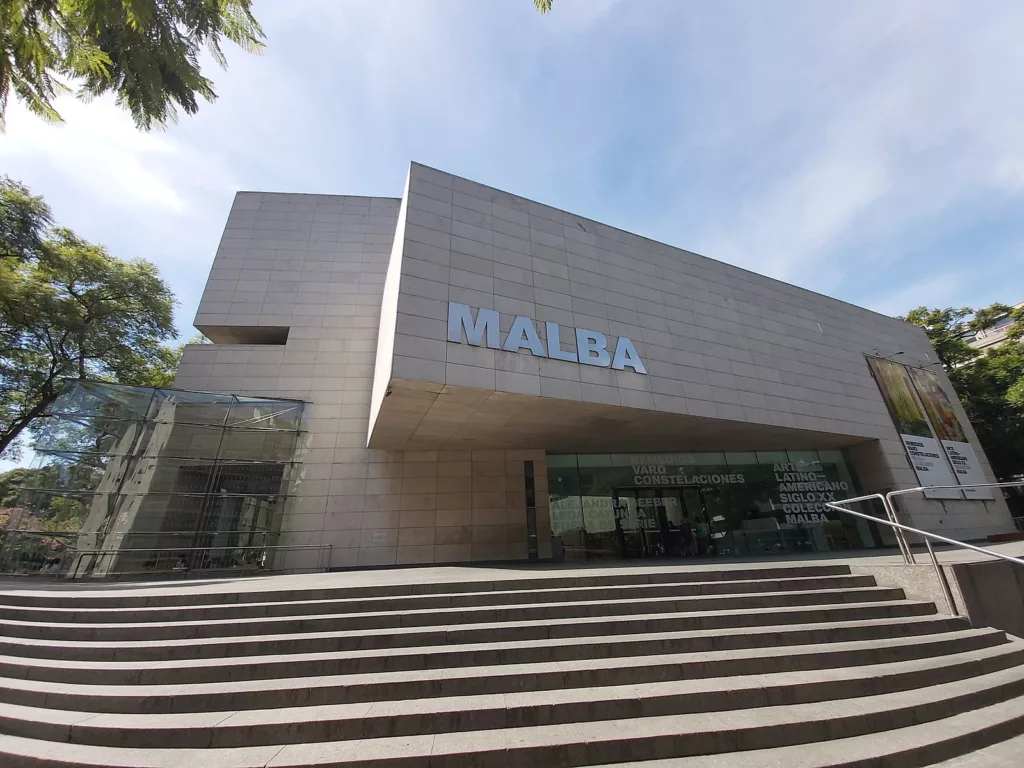
For art aficionados, a visit to Buenos Aires would be incomplete without stepping foot into the Museo de Arte Latinoamericano de Buenos Aires or MALBA. This museum, one of the most important in Latin America, hosts an impressive collection of 20th and 21st-century Latin American art.
Founded in 2001 by Argentine businessman Eduardo Costantini, MALBA is dedicated to promoting Latin American art and artists. The museum’s permanent collection boasts works from some of the greatest artistic talents in the region, including Frida Kahlo, Diego Rivera, Antonio Berni, and Xul Solar. It’s a vibrant and diverse collection, spanning various artistic movements and mediums.
However, MALBA is more than just a museum. It’s a dynamic cultural institution that hosts temporary exhibitions, film screenings, literary activities, and educational programs. The museum’s architectural design is equally compelling. The modern structure, with its sleek lines and open spaces, offers a stark contrast to the city’s more traditional buildings, and it serves as an apt setting for the contemporary art it houses.
Whether you’re an avid art lover or simply curious, a visit to MALBA offers a deep and engaging immersion into Latin America’s rich artistic heritage. The museum’s well-curated collection provides a snapshot of the region’s historical, social, and cultural transformations through the lens of its most influential artists.
Voyagix Tips
To make the most of your visit to MALBA, consider these tips:
- Timing: MALBA is open from Thursday to Monday, with extended hours on Wednesdays. The museum is closed on Tuesdays.
- Tickets: You can buy tickets at the museum or online through the MALBA website. Consider checking their website for any ongoing exhibitions or events during your visit.
- Tours: The museum offers free guided tours in Spanish. For English tours, you may need to arrange this in advance.
- Facilities: The museum has a gift shop selling a range of art books and souvenirs, and a café where you can grab a bite.
As you explore MALBA, you’ll encounter a breathtaking array of art that tells the story of Latin America, its people, and its cultures. It’s an experience that not only delights the eyes but also enriches the mind and the soul.
10. Enjoy an Asado
There’s no better way to immerse yourself in Argentine culture than by indulging in an authentic Asado, the Argentine barbeque. It’s more than just a meal; it’s a social event, a tradition, and an integral part of Argentine life. Whether you’re visiting a local’s home or a closed-door restaurant, you’re in for a culinary experience that goes beyond the palate.
Asado typically involves a variety of meats, including beef ribs, sausages, and sometimes organs, all slow-cooked to perfection on a parrilla (grill). The process begins with the lighting of the fire, using wood or charcoal, which is then allowed to burn down to embers to provide a steady and intense heat. This slow cooking method, often over many hours, allows the flavors to develop and the meat to become incredibly tender.
Asado is more than just the food; it’s about the ritual and the gathering. It’s common for friends and family to gather around the parrilla, chatting, and sipping on wine while the meat cooks. It’s a relaxed and social affair that perfectly encapsulates the Argentine spirit.
While asados are common in many restaurants, for a truly authentic experience, consider visiting a closed-door restaurant or a local’s home. These private dining experiences, also known as ‘puertas cerradas’, provide an intimate setting where you can enjoy homemade asado and engage with locals.
Voyagix Tips
For your asado experience, consider these tips:
- Where to Eat: While many restaurants offer asado, consider a ‘puertas cerradas’ for a more authentic experience.
- What to Order: Try a bit of everything! From ribs to sausages and sweetbreads, each cut has its unique flavor.
- What to Drink: Asado is typically enjoyed with Malbec, Argentina’s famous red wine.
- Timing: Keep in mind that asado is a slow process and is often enjoyed over several hours. Don’t rush, savor the experience!
An asado experience is a journey into the heart of Argentine gastronomy, where every bite tells a story of tradition and camaraderie. It’s a must-do, not just for the fantastic flavors but also for the connection it offers to the Argentine way of life.
11. Take a Day Trip to Tigre
Looking to escape the hustle and bustle of Buenos Aires? A day trip to the serene town of Tigre is the perfect remedy. Located just 28 kilometers north of the city, Tigre is a charming town known for its delta, outdoor markets, and tranquil way of life.
The town’s main attraction is the Paraná Delta, an intricate network of islands and waterways that offer a stark contrast to the urban landscape of Buenos Aires. Here, life moves at a slower pace, with locals often using boats instead of cars for transport. One of the best ways to explore the Delta is by taking a boat tour, where you’ll meander through the labyrinth of calm rivers, passing stilt houses, lush vegetation, and diverse wildlife along the way.
On land, Tigre has a lot to offer as well. The town is home to the bustling Puerto de Frutos, a popular outdoor market where you can buy everything from fresh produce to handicrafts and antiques. Other points of interest include the beautiful Paseo Victoria, lined with historic mansions, and the Tigre Art Museum, housed in a stunning Belle Époque building.
Whether you’re cruising the peaceful delta, haggling at the local markets, or simply enjoying the laid-back atmosphere, Tigre provides a refreshing break from the city.
Voyagix Tips
Here are a few tips for your day trip to Tigre:
- How to Get There: The easiest way to reach Tigre from Buenos Aires is by train. The Mitre Line leaves from Retiro Station and takes about an hour. There are also buses and ferries available.
- Boat Tours: There are many boat tour operators in Tigre. Tours range from one hour to a full day. You can book on the spot or online in advance.
- What to Do: Apart from the boat tour and the market, consider visiting the Tigre Art Museum and the Parque de la Costa, an amusement park that’s a hit with families.
- What to Bring: Don’t forget sunscreen, insect repellent, and a hat for the boat tour. And remember to carry cash for the market.
A day trip to Tigre offers a delightful respite from the energy of Buenos Aires. Here, amidst the calm waters and lush landscapes, you’ll discover a different side of Argentina that’s as enchanting as it is tranquil.
12. Try Mate
Immerse yourself in Argentine culture by partaking in the local tradition of drinking Mate (pronounced MAH-teh). Mate is a traditional South American drink, steeped in history and symbolism, and its consumption is a social ritual as much as it is a daily refreshment.
Mate is made from the dried leaves of the yerba mate plant, which are placed in a hollowed-out gourd, filled with hot water, and sipped through a metal straw called a bombilla. The drink is strong, bitter, and caffeine-rich, and is often enjoyed with sweet pastries or cookies.
But more than just a beverage, mate is a symbol of hospitality and camaraderie. It’s common to see groups of friends, families, or even coworkers sharing a single gourd of mate, each person taking turns to sip before passing it on. This communal aspect of drinking mate is deeply ingrained in Argentine culture, and joining in this ritual is a wonderful way to connect with locals and gain insight into their customs and way of life.
Voyagix Tips
Here are a few tips to enhance your mate experience:
- Where to Try: You can try mate in many cafés in Buenos Aires, or better yet, join a local’s home or a mate tasting tour for an authentic experience.
- How to Drink: When offered mate, it’s polite to drink the entire serving before passing it back to the host for refilling. It’s also customary to thank the host when you’ve had enough.
- Pairing: Mate is often enjoyed with sweet snacks like medialunas (Argentine croissants) or alfajores (cookie sandwiches).
Drinking mate is not merely about quenching your thirst; it’s a unique cultural experience that gives you a taste of the Argentine spirit of sharing and community. So, accept the gourd when it’s passed to you, and enjoy this richly symbolic and quintessentially Argentine tradition.
13. Visit the Carlos Thays Botanical Garden
Escape the city’s relentless pace and retreat into the serene heart of Buenos Aires at the Carlos Thays Botanical Garden. This tranquil green oasis, tucked away in the Palermo neighborhood, is a lush haven for both nature lovers and those seeking a quiet respite from the urban rush.
The Botanical Garden is home to over 5,000 species of plants from around the globe, all meticulously maintained and beautifully displayed in a series of themed gardens. As you wander along the well-marked paths, you’ll encounter everything from towering palms and fragrant roses to ancient trees and delicate ferns. A notable feature of the garden is its stunning collection of sculptures, including a beautiful Art Nouveau greenhouse, a perfect spot for a restful pause.
Founded in 1898 by French-Argentine architect and landscape designer Carlos Thays, the garden’s layout is as thoughtfully designed as the plant collection it houses. Five greenhouses, each with its own climatic conditions, allow for a wide range of plant life. A library of over 1,000 botanical volumes, a herbarium, and a museum add to the garden’s value as an educational resource.
Yet, despite its wealth of flora and educational opportunities, perhaps the garden’s most appealing aspect is its atmosphere of calm and tranquility. Whether you’re admiring the plants, reading a book on a secluded bench, or watching the local cats that inhabit the garden, the Carlos Thays Botanical Garden provides a peaceful escape from the bustling city around it.
Voyagix Tips
To make the most of your visit to the Carlos Thays Botanical Garden, consider the following tips:
- Getting There: The garden is easily accessible by public transport, located near the Plaza Italia subway station. Check the official website for more details.
- When to Visit: The garden is open all year round, but the best time to visit is during the spring (September to November) when many of the plants are in bloom.
- Guided Tours: Guided tours are available and can offer valuable insight into the garden’s history and the species it hosts.
- What to Bring: Bring a book or a picnic and enjoy the peaceful ambiance. But remember, this is a place of quiet contemplation, so be mindful of noise levels.
A visit to the Carlos Thays Botanical Garden is more than a break from the urban environment; it’s a chance to immerse yourself in nature’s diversity and beauty, right in the heart of Buenos Aires.
14. Explore the Feria de Mataderos
For a truly authentic and lively Argentine experience, the Feria de Mataderos is a must-visit. This vibrant fair, located on the outskirts of Buenos Aires in the traditional neighborhood of Mataderos, is a wonderful opportunity to immerse yourself in local culture, far from the usual tourist trails.
The fair takes place every weekend and is a bustling blend of music, dance, food, and traditional crafts. With over 300 stalls, you can browse and buy everything from handmade leather goods and silver jewelry to regional food products and vintage records. A particularly fascinating feature of the fair is the gaucho (Argentinian cowboy) demonstrations. Here, you can watch these skilled horsemen showcase their abilities in traditional games of skill, providing a glimpse into Argentina’s rural heritage.
Yet, the heart of Feria de Mataderos is its music and dance. The fair is one of the best places in Buenos Aires to experience folk music, with live performances happening throughout the day. You’ll see dancers performing traditional Argentine dances, and if you’re feeling brave, you’re more than welcome to join in. The fair is also a culinary delight. Here you can try traditional Argentine street food, such as empanadas, locro (a hearty stew), and choripán (chorizo sandwich), all while sipping on a refreshing glass of local craft beer or wine.
A visit to Feria de Mataderos is a celebration of Argentina’s rich cultural heritage. It’s a place where the past and present come together in a colorful, lively, and delicious way.
Voyagix Tips
To enhance your visit to Feria de Mataderos, consider the following tips:
- Getting There: The fair is located about 8km from the city center. You can take a bus, taxi, or use a ride-sharing service like Uber. Check the official website for more details.
- When to Visit: The fair takes place every Sunday throughout the year, with additional night markets during the summer months. It’s recommended to arrive early to beat the crowds and stay late for the music performances.
- What to Do: Try the traditional foods, watch the gaucho demonstrations, and don’t miss the folk dancing. And don’t forget to bring cash as many vendors do not accept cards.
- What to Bring: Bring a hat and sunscreen as the fair is mostly outdoors, and it can get quite hot in the summer months.
A day spent at the Feria de Mataderos is not just a fun-filled outing, but a journey into the vibrant heart of Argentine culture, offering experiences that will make your Buenos Aires trip truly unforgettable.
15. See the Casa Rosada
When you think of Buenos Aires, one image that likely comes to mind is the iconic Casa Rosada. Known as the “Pink House” due to its distinct rose-colored façade, this impressive building serves as Argentina’s presidential palace. Situated in the heart of Buenos Aires, it overlooks the historic Plaza de Mayo, a site steeped in pivotal events in Argentine history.
The Casa Rosada houses the office of the President of Argentina, but beyond its political significance, the building is a remarkable piece of architectural design. Its Italian-style architecture combined with its pink hue makes it a standout landmark in the cityscape of Buenos Aires. The building’s most famous feature, the balcony, has been a platform for countless speeches by notable Argentine figures, including Eva Perón’s heartfelt address to the masses in the 1950s.
Yet, there’s more to the Casa Rosada than meets the eye. It also houses the Museo de la Casa Rosada, a museum showcasing a fascinating collection of artifacts relating to the presidents of Argentina. From historic documents to personal items, the museum offers a unique window into the nation’s political past. Visitors can also explore the grand halls, lavishly decorated rooms, and even step onto the famous balcony during a guided tour.
Just steps away from the Casa Rosada, the Plaza de Mayo has been the stage for many of Argentina’s most significant political events, including protests and rallies. The square is surrounded by other important buildings such as the Metropolitan Cathedral and the Cabildo, both worth exploring.
Voyagix Tips
To make the most of your visit to Casa Rosada and Plaza de Mayo, consider these tips:
- Getting There: Casa Rosada is located in the center of Buenos Aires and is easily accessible by public transport. Visit the official website for more details.
- Tours: Guided tours of Casa Rosada are available and are free of charge, but they need to be booked in advance on the official website.
- When to Visit: The square is always open, but the best time to visit is during the day when the surrounding buildings, including Casa Rosada, are open to the public.
- What to Bring: A camera is a must, as Casa Rosada and the Plaza de Mayo are two of the most photogenic spots in Buenos Aires.
Visiting Casa Rosada and Plaza de Mayo is more than sightseeing; it’s an opportunity to walk through the pages of Argentina’s history and understand the country’s political narrative in a vivid and engaging manner.
16. Bike Around Palermo
Delve into the heart of Buenos Aires’s largest and most vibrant neighborhood – Palermo. Known for its eclectic energy, chic boutiques, vibrant nightlife, and picturesque parks, Palermo is a captivating district that embraces the dynamic spirit of Buenos Aires. And what better way to explore this expansive neighborhood than by bike?
Palermo is actually a collection of sub-districts, each with its unique character and charm. From the bohemian vibes of Palermo Soho, known for its fashionable boutiques, artisanal shops, and charming cafés, to Palermo Hollywood, the epicenter of Buenos Aires’s television and film industry and home to an array of trendy bars and restaurants, there’s so much to discover.
Yet, the jewel in Palermo’s crown is undoubtedly the Bosques de Palermo (Palermo Woods), the largest green space in Buenos Aires. Here, you can bike along tree-lined paths, around tranquil lakes, and past fragrant rose gardens. Don’t miss the Galileo Galilei planetarium and the beautiful Japanese Garden, both located within the park.
Biking in Palermo gives you the freedom and flexibility to explore at your own pace. You’ll find bike rental services throughout the neighborhood, and many offer guided tours if you prefer to explore with an expert local guide. Biking also allows you to cover more ground and take in a greater variety of sights than you would on foot.
Voyagix Tips
Here are some tips to make your biking adventure in Palermo even more enjoyable:
- Getting There: Palermo is well connected by public transport. You can take the subway (Line D) or numerous bus lines. Visit the official Buenos Aires website for more details.
- Bike Rentals: There are several bike rental companies in Palermo. Prices vary, so check a few before deciding. Some also offer guided bike tours.
- When to Visit: The best time to explore Palermo by bike is during the day, especially in the morning or late afternoon when the weather is cooler.
- What to Bring: Don’t forget to bring water, sunscreen, and your camera. Also, remember to wear comfortable clothes and shoes for biking.
Exploring Palermo by bike is not just an enjoyable activity; it’s a chance to experience Buenos Aires’s unique blend of urban chic and laid-back charm from a fresh perspective. Pedal your way through a day of discovery and fun!
17. Learn about Argentina’s History at the National Historical Museum
For history buffs or anyone seeking a deeper understanding of Argentina’s fascinating past, a visit to the National Historical Museum (Museo Histórico Nacional) is an absolute must. Nestled in the Parque Lezama, in the heart of Buenos Aires, this important institution offers a comprehensive overview of Argentina’s history, spanning from pre-colonial times to the present day.
The museum houses an impressive collection of over 50,000 items, including artifacts, documents, and works of art that collectively tell the story of Argentina’s rich history. As you wander through the museum’s halls, you’ll journey back in time, exploring the indigenous cultures that originally inhabited the region, the Spanish colonial period, the fight for independence, and the formation of the Argentine Republic.
Among the museum’s highlights are items belonging to national heroes, including José de San Martín and Juan Manuel de Rosas. The museum’s collection paints a vivid picture of Argentina’s past, making it a vital destination for anyone wanting to understand the country’s history and culture.
After exploring the museum’s exhibits, take a moment to appreciate the building itself. The museum is located in a beautiful colonial mansion, a historical monument in its own right, with a lush garden offering a peaceful respite from the bustling city outside.
Voyagix Tips
To make your visit to the National Historical Museum even more enriching, consider the following tips:
- Getting There: The museum is situated in Parque Lezama, easily accessible by public transport. Visit the museum’s official website for more information.
- Admission: As of my knowledge cutoff in 2021, admission to the museum is free, but it’s always best to check the current information on the official website.
- When to Visit: To avoid crowds, try visiting early in the day or mid-week when it’s less busy.
- What to Bring: Remember to bring your camera and note-taking materials if you’d like to document your visit.
Whether you’re a history enthusiast or just keen on understanding Argentina better, the National Historical Museum in Buenos Aires is an unforgettable journey through the centuries of the nation’s vibrant and complex past.
18. Watch a Football Match
In Buenos Aires, football is more than just a sport—it’s a passion, a culture, and a way of life. The city is home to some of South America’s most legendary football clubs, including River Plate and Boca Juniors, making it the perfect place to experience the electric atmosphere of a local football match.
Attending a football match in Buenos Aires is unlike anything else. The energy is palpable from the moment you approach the stadium, with throngs of excited fans cheering, chanting, and singing in anticipation. Once inside, the excitement reaches a fever pitch as the teams take the field. Whether you’re a football fanatic or not, the experience of being in the crowd as it roars to life is unforgettable.
The rivalry between Boca Juniors and River Plate, known as the Superclásico, is one of the most intense in the world of football. Matches between these two teams are highly anticipated events, and the atmosphere is nothing short of electrifying.
Both teams have iconic stadiums: River Plate’s Monumental Stadium and Boca Juniors’ La Bombonera. Each venue offers a distinct experience, but they share one thing in common—a passionate love for football that permeates every inch of the stands.
Voyagix Tips
Here are some tips to make your football match experience even more memorable:
- Getting Tickets: Tickets to matches, especially for the Superclásico, can sell out quickly. It’s advisable to book in advance. Check the teams’ official websites, River Plate and Boca Juniors, for information.
- Safety: Football matches can get rowdy. Keep your belongings secure and follow the instructions of stadium staff and local authorities.
- Attire: Remember to dress in the colors of the team you’re supporting. Avoid wearing rival team colors for your safety.
- When to Arrive: Arrive early to fully experience the build-up to the match and to find your seat.
Experiencing a local football match in Buenos Aires is more than just watching a game—it’s about feeling the passion and dedication of the fans, the energy of the city, and the spirit of Argentina itself.
19. Explore the Reserva Ecológica Costanera Sur
Located right next to Buenos Aires’ city center is a green oasis that is the Reserva Ecológica Costanera Sur. This 865-acre natural reserve serves as an important sanctuary for wildlife and a haven for city dwellers and tourists alike, seeking a serene escape from the urban hustle and bustle.
Formerly a riverside resort, the area was reclaimed by nature in the late 20th century and is now home to an abundance of flora and fauna. From lush forests and lagoons to tall grasses and wetlands, the reserve’s diverse ecosystems create a welcoming environment for hundreds of bird species, numerous reptiles, and small mammals.
Take a leisurely stroll or rent a bike and follow the marked trails through the reserve. Along the way, you’ll likely spot bright-colored butterflies, hear birdsongs, and see nature enthusiasts with their binoculars and cameras ready. It’s a fantastic place to connect with nature and enjoy some peace and quiet.
The reserve also provides a stunning view of the city’s skyline. On clear days, particularly at sunrise or sunset, the juxtaposition of the natural reserve against the urban backdrop is breathtaking.
Voyagix Tips
For an optimal visit to the Reserva Ecológica Costanera Sur, consider these tips:
- Getting There: The reserve is easily accessible by foot, bike, or public transport.
- Best Time to Visit: Early morning or late afternoon are the best times for wildlife spotting. Weekdays are less crowded than weekends.
- What to Bring: Be sure to bring binoculars for birdwatching, a camera for capturing the scenery, water to stay hydrated, and insect repellent.
- Respect Nature: Remember to stay on marked paths, avoid disturbing wildlife, and do not leave any trash behind.
Whether you’re a nature lover, a photography enthusiast, or simply someone seeking a quiet retreat, the Reserva Ecológica Costanera Sur is a rewarding destination that showcases a different, serene side of Buenos Aires.
Conclusion
From the vibrant and colorful neighborhoods to its rich history, the sumptuous food to the passionate tango, Buenos Aires offers a plethora of experiences for every type of traveler.
Whether you’re an art enthusiast who gets lost in exquisite works of art, a history buff who revels in the narratives of the past, a foodie who loves to experiment with diverse flavors, or an adventure seeker who loves to discover hidden gems, these 19 things to do in Buenos Aires ensure an unforgettable journey into the heart of Argentina.
This list serves as a guide to not just explore the city’s iconic landmarks, but also to delve deeper into its culture and lifestyle, to truly experience the city’s heartbeat, and to create memories that last a lifetime. So why wait? Start planning your Argentine adventure today and let Buenos Aires mesmerize you with its unique charm, making your trip an experience of a lifetime.

